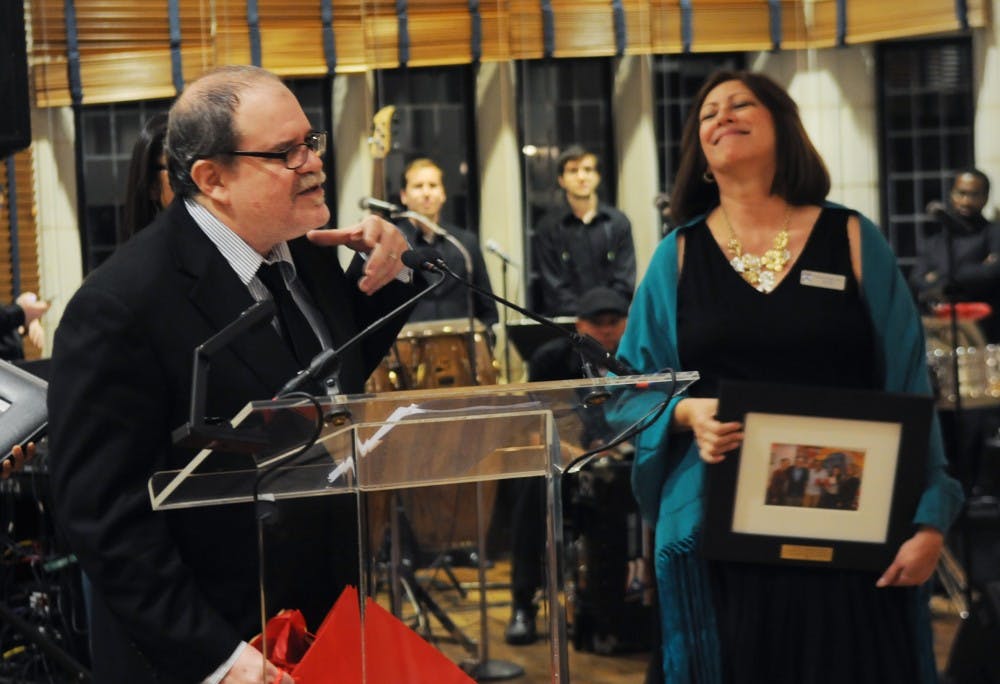
When he arrived at Penn 30 years ago, Pedro Ramos felt as if he had come to a different world.
“Getting to Penn was literally like landing on Mars,” Ramos, a 1987 College graduate , would recall later to a student audience at Festival Latino in 2000.
Ramos, who had grown up in an “insular Puerto Rican community,” remembered first arriving on campus in a 1974 Chevy that his family owned and seeing “all these cars that [he] had only seen on TV,” according to a previous Daily Pennsylvanian article.
Now thanks to La Casa Latina, students like Ramos feel much more at home.
La Casa Latina, which is celebrating its 15th anniversary this month, functions as a gathering place for Latino students and a resource center for 18 Latino student

organizations.
“You come here to find your home away from home and that’s exactly what La Casa functions as,” said Jasmine Perez, a 2010 Nursing graduate and head of the Association of Latino Alumni.
In 1987, when Ramos graduated, Latino students, staff and faculty would meet for social and cultural events at the Greenfield Intercultural Center, which serves as a space for all minority groups. Despite this, Luz Marin, who came to the University two years later, felt that something was missing.
“At that time, there was no place for Latinos to do community. It did not exist,” she said.
“I started to think, my god, if I feel the need for community, what must it be like for students who are coming to the university who may come from economically disadvantaged families?” said Marin, currently a program coordinator in the Gender, Sexuality and Women’s program. “Penn could be a pretty intimidating place if you have access or privilege, imagine if you didn’t have any access or privilege.”
According to La Casa’s official history, the turning point for the Latino community came with the formation of the Latino Faculty and Staff Association in 1994. There was a lot of discussion about the issues facing the Latino community at the University at the informal gatherings held by the new association, Marin said. But for Marin, a meeting she had with a Latino community organizer proved to be the pivotal moment.
The organizer, Philip DeChavez , who was attending Penn’s medical school at the time, asked Marin to introduce him to other faculty and staff because he had also felt the need for a physical place for Latinos on campus.
Soon, Lilvia Soto, an assistant dean for academic advising, Jorge Santiago, an Engineering professor, and Hilda Luiggi, a staff member in the Medical School’s diversity office, joined the group — creating a critical mass.
“We went to dean after dean, to articulate the need for a place [that] Latino students, alums, staff and faculty can gravitate towards and engage whatever problem we have collectively,” Santiago said.
The group also received support from Gilbert Casellas, a 1977 Penn Law graduate who also was a member of the Board of Trustees.

On the student side, DeChavez , who had helped to put together the Latino Coalition (now known as the Latin@ Coalition), led student protests to demand action from the University. In one protest he helped lead on April 21, 1998, a group of Latino student leaders marched from the high-rise field to six different administrative offices, including the Office of Admissions and President Judith Rodin’s office to deliver their complaints. They were followed by a crew of newscameras and reporters from Philadelphia media outlets.
Contained in the four-page report that students created was the demand for a resource center specifically for Latino students, as well as a general call for the University to increase the number of Latino students, staff and faculty.
The official proposal that led to the creation of the center though, was not submitted until October 30, 1998. Almost a year later, La Casa Latina officially opened its doors. “Our work was really to plant the seed, but the seed actually grew and we can see its fruit because it was a very fertile soil,” Santiago said. He pointed specifically to Rodin and the then director of Vice Provost for University Life’s concern on the issue.
Fifteen years later, La Casa is continuing to provide many Latino students with a home on campus.
“Everything is just family oriented,” said Perez, who has been involved with La Casa since she first arrived on campus in 2004 and remains in touch now as an alumni. She calls Maritza Santiago-Torres, La Casa’s office manager, “mom.” Johnny Irizarry, La Casa’s director — who did not respond to multiple requests for an interview by publishing time — calls Perez “his daughter,” she said.
“This is a family,” Perez added. “It’s not just something that happens while you’re here at Penn, it continues.”
The Daily Pennsylvanian is an independent, student-run newspaper. Please consider making a donation to support the coverage that shapes the University. Your generosity ensures a future of strong journalism at Penn.
DonatePlease note All comments are eligible for publication in The Daily Pennsylvanian.





